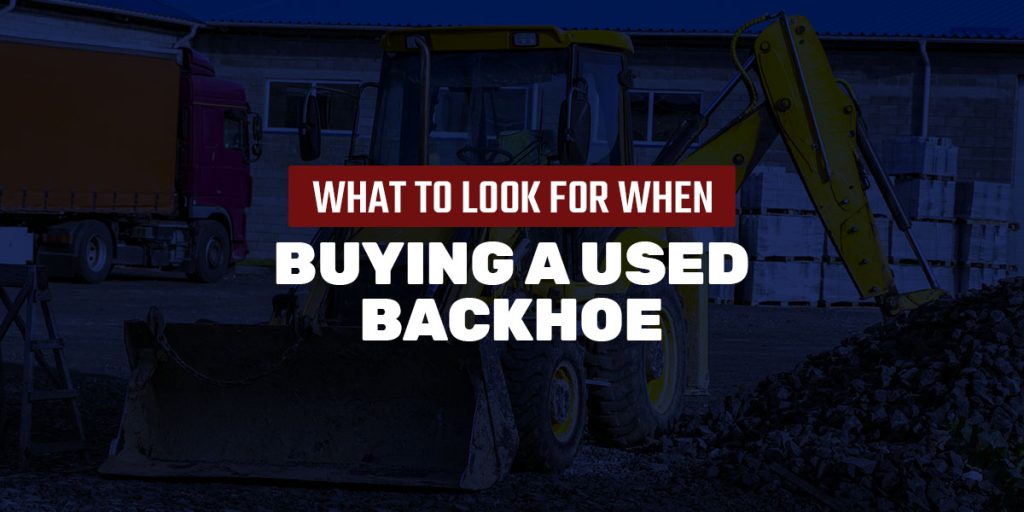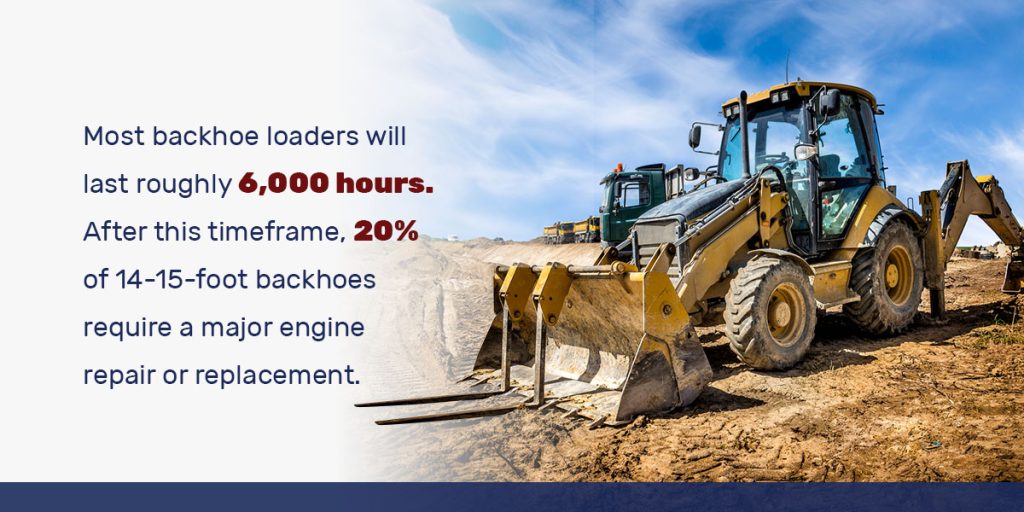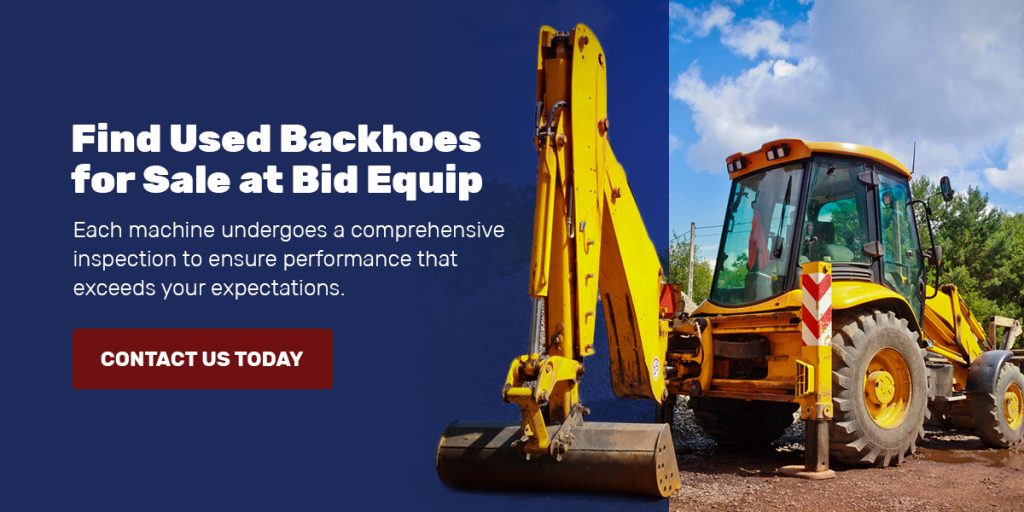What to Look for When Buying a Used Backhoe

Backhoe loaders are used in a variety of construction, landscaping and excavation projects. They are a valuable addition to many job sites. However, different applications call for different machine types, sizes, attachments, load heights and other features. This guide will provide tips for buying a used backhoe loader, helping you select a suitable machine for your requirements.
Things to Check During an Inspection
A thorough inspection is a critical part of the buying process. You want to ensure every component functions properly, from the engine to the bucket teeth. Here are some essential elements to check when inspecting a used backhoe:
- Engine: Inspect the engine for leaks, outdated filters and loose belts. Looking at the machine’s notes can help you determine when the filter was last changed.
- Hydraulic system: Check each part of the hydraulic system, including the hoses, couplings and cylinders. Signs of damage and wear, such as scratches, leaks or dents, can expose the hydraulic system to contaminants.
- Loader bucket: Ensure the backhoe’s loader bucket is in optimal condition. Look for indicators of damage, like dents and cracks. Examine the bucket’s sides, bottom and leading edges to confirm it’s structurally sound.
- Bucket teeth: In addition to the bucket itself, check the bucket teeth for worn, loose or missing teeth. Ensure there aren’t any bolts missing. You should also inspect the bucket’s cutting edge for scalloping and other signs of damage. If the cutting edge appears worn, flipping it will usually keep it working.
- Loader arms: After checking the bucket, inspect the arms attached to it. Check for cracks, bends and re-welds. Cracks generally mean the loader was pushed beyond capacity. Bends likely mean the machine was rolled. Re-welds indicate the loader arms have undergone repair. Review the service records to ensure the repair was done professionally.
- Tires: Typically, a backhoe will have one of three axle configurations — 4×4, 4×2 and 4x4x4. To verify this configuration, inspect the tire size and determine if the front axle has a differential and drive shaft. Be sure to check for leaks in the axle, too.
- Cab: Inspect all parts of the cab, including the joystick, foot pedal and seat. Look over any additional technology or features in the cab to ensure they’re in working order, as well. You should also check the hour meter to compare the amount of wear against the duration of the backhoe’s use.
The seller will probably let you try the machine to ensure it operates correctly. Start the backhoe and perform some standard operating tasks, like digging a patch of terrain or picking up and moving a light load.
Pay close attention to each component as you drive. If you notice things like difficulty steering, high fluid temperature or a chattering noise, the hydraulic system may be damaged. You should only invest in a used backhoe if you’re fully confident in its performance. Ensure it can handle the tasks you need before committing to a purchase.
Besides physically inspecting the parts, request service records from the seller to learn about its history. This documentation can tell you how much the backhoe has been used and whether it has seen any damage.

What Is Considered High Hours on a Backhoe?
Most backhoe loaders will last roughly 6,000 hours. After this timeframe, 20% of 14-15-foot backhoes require a major engine repair or replacement. Half of the backhoe’s components start to break down by the 8,500-hour mark, likely failing within 3,500 hours. Therefore, you can presume the machine will need a new engine soon if it’s nearing 6,000 service hours.
What Is the Best Used Backhoe to Buy?
The factors below can guide you in choosing the right backhoe loader for your job site.
1. Application
Small tasks — like transporting light loads — can typically be completed with the help of a standard or compact backhoe loader. A larger and more powerful model is likely better for heavy-duty jobs.
You’ll also need to choose between two-wheel drive and four-wheel drive configurations. Two-wheel drive backhoe loaders are a great option for mulching and landscaping tasks. Four-wheel drive backhoe loaders are better suited for heavy bucket loads or if you need more stability.
2. Size
A backhoe loader’s size largely impacts maneuverability and performance. You’ll want a more compact machine if you need to navigate tight spaces.
However, a used small backhoe is less ideal for a larger, more demanding work site. It may lack the necessary power and digging capacity. Choose a larger model with a bigger bucket if you need additional power and efficiency to cover more ground. You should also consider the backhoe’s load height, as this will determine the ease of material loading and unloading.
3. Attachments
Backhoe loaders come with various attachments for different applications, such as digging buckets, grapples, concrete saws and front forks. Determine the attachments you need and select a backhoe compatible with these components.
What Not to Do With a Backhoe
Once you choose the right backhoe for your worksite, proper use and care are essential to maintain its condition and reliability. To preserve performance, keep drivers safe and prevent unnecessary strain on the machine, here are some things to avoid:
- Turning uphill on steep slopes or too quickly downhill: These actions can cause overturns, putting both the machine and operator in harm’s way.
- Starting the loader in gear: If a person is in front of or behind the loader’s wheels, the machine could run them over before they can get out of the way.
- Using the backhoe without working stabilizers: Stabilizer legs are an essential safety feature for both the machine and the operator. They prevent the loader from tipping and help protect the equipment. Activating the stabilizer legs during digging raises the wheels off the ground, minimizing weight and stress on the equipment.
Different Types of Backhoe Loaders
Consider the different backhoe loader configurations to help you choose an appropriate machine for your applications:
- Standard: Standard backhoes are the most common type. They feature a digging bucket at the front and a backhoe at the rear. These versatile machines can suit various tasks, like digging, lifting and trenching.
- Extendable: Extendable backhoes have a telescopic arm to extend their reach. This feature makes them ideal for deeper digging applications.
- Mini: Mini loaders are essentially smaller versions of standard backhoe loaders. They’re ideal for small-scale, light-duty jobs.
Find Used Backhoes for Sale at Bid Equip
At Bid Equip, we host one of the world’s largest heavy construction equipment auctions. We offer both online bidding options and in-person auctions from our warehouse in Pennsylvania.
We have used backhoes available through our online skid steer auctions. Our extensive, affordable selection includes high-quality models like Komatsu and Caterpillar. Our inventory is constantly expanding, and each machine undergoes a comprehensive inspection to ensure performance that exceeds your expectations.
To find used backhoe loaders for your unique material handling needs, contact us to learn more about our selection or browse our upcoming auctions today!












